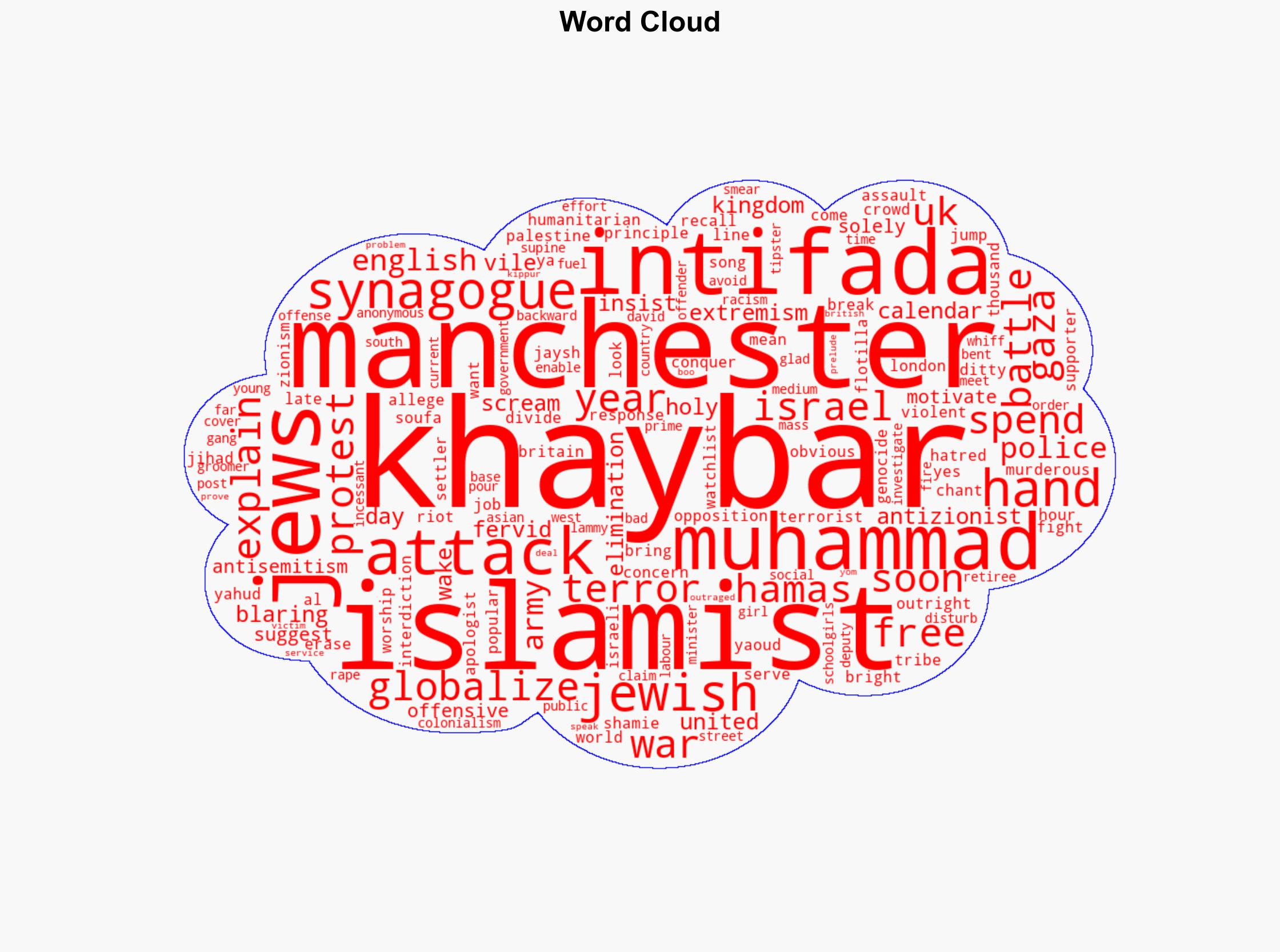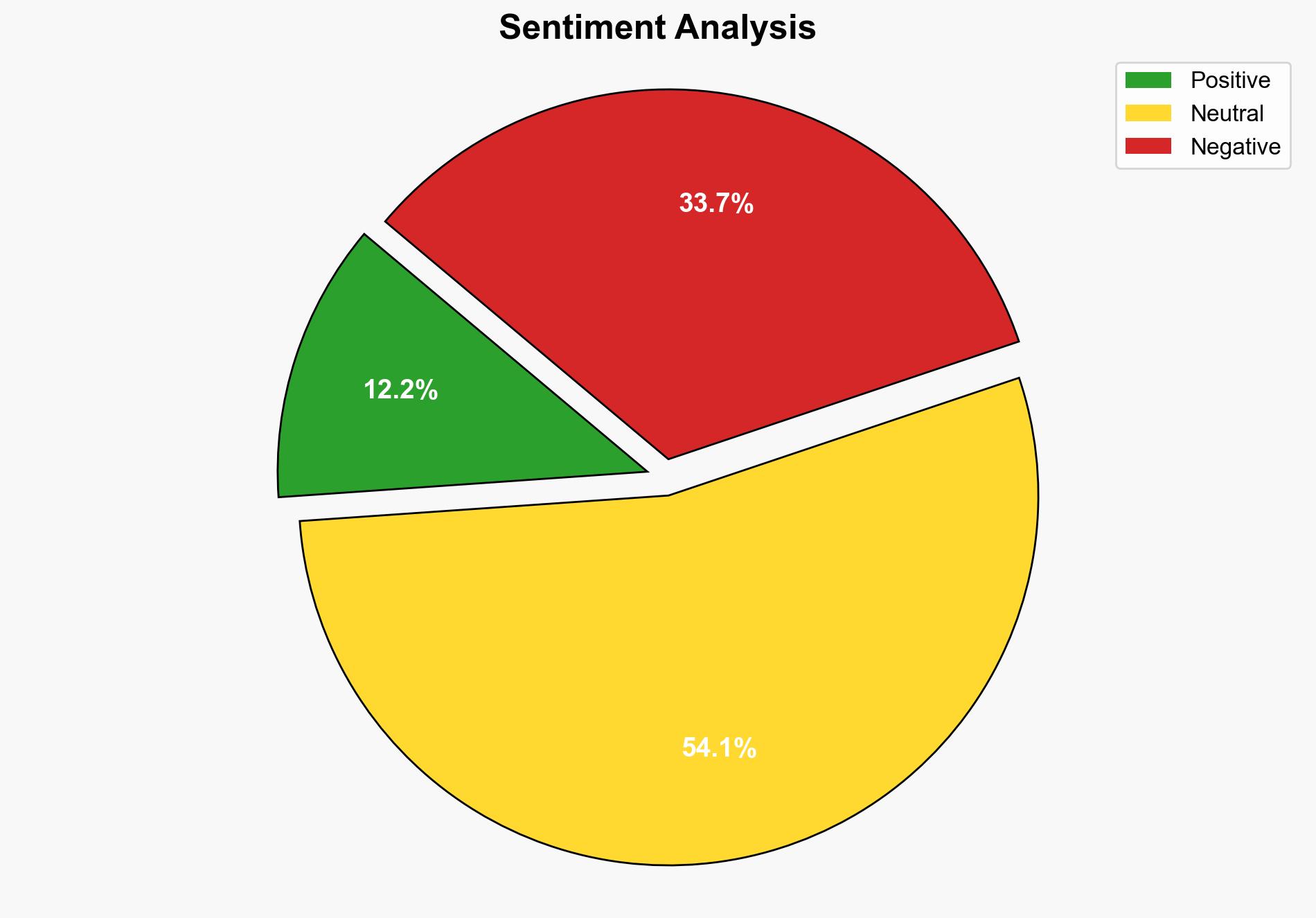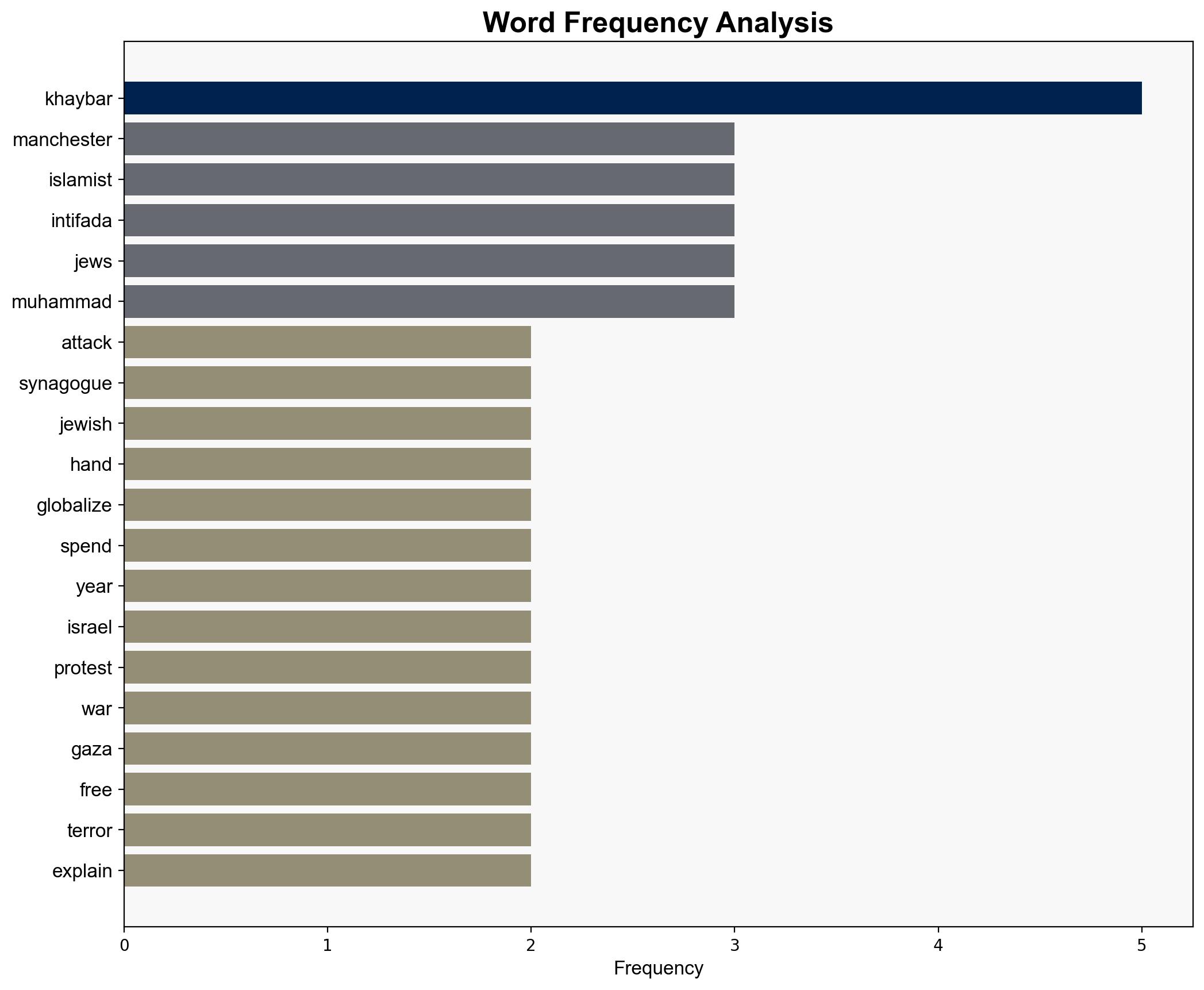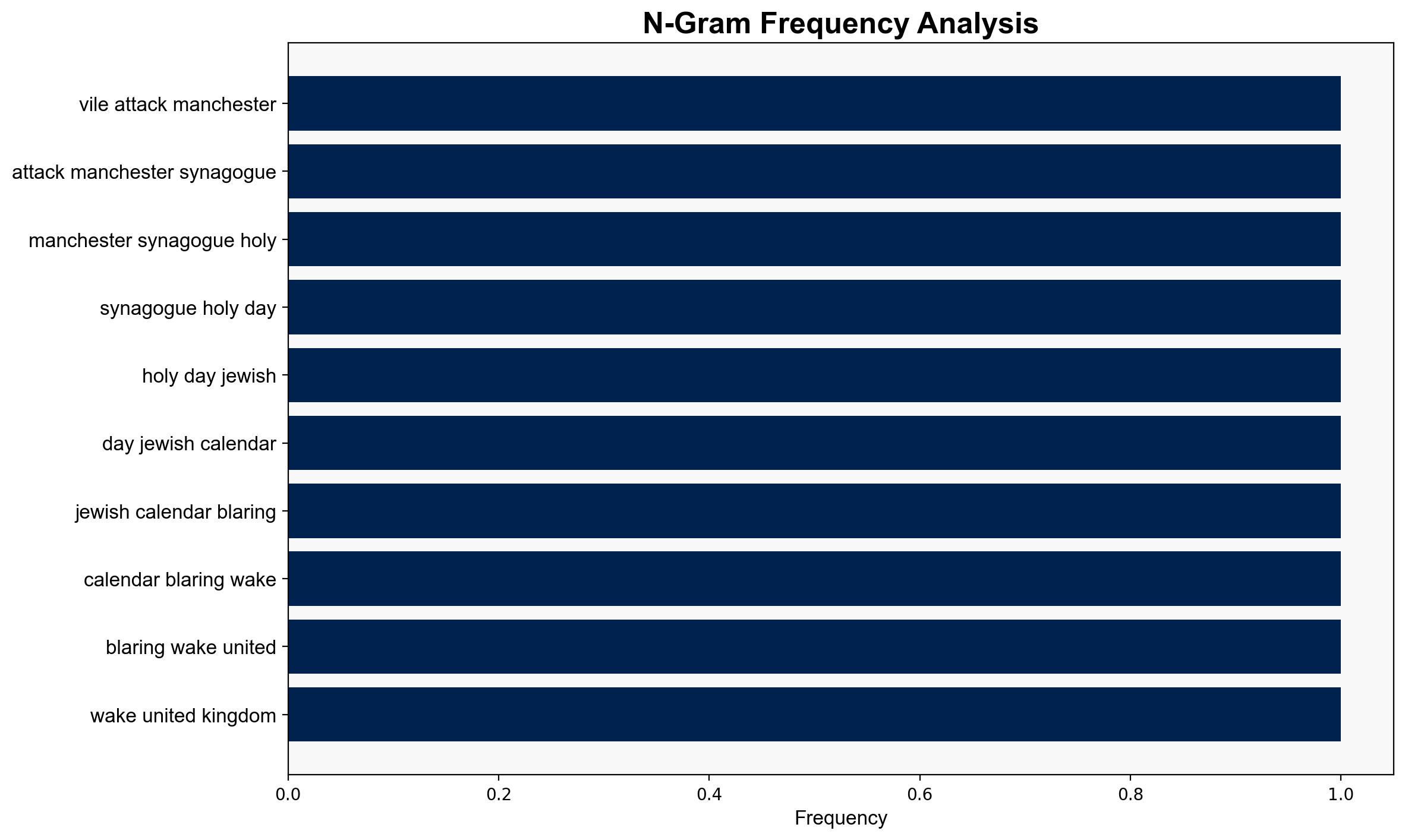Britain must wake up to the reality of Islamist terror in its midst – New York Post
Published on: 2025-10-04
Intelligence Report: Britain must wake up to the reality of Islamist terror in its midst – New York Post
1. BLUF (Bottom Line Up Front)
The most supported hypothesis is that the recent attack and protests are part of a broader, coordinated effort to increase Islamist influence and anti-Zionist sentiment in the UK. Confidence level is moderate due to the complexity of motivations and potential for misinformation. Recommended action includes enhancing intelligence operations focused on identifying and disrupting extremist networks and improving community engagement to counter radicalization.
2. Competing Hypotheses
1. **Coordinated Islamist Extremism**: The attack and protests are part of a coordinated effort by Islamist extremists to increase their influence in the UK, using anti-Zionist rhetoric as a cover for broader anti-Semitic and anti-Western objectives.
2. **Localized Radicalization and Protest**: The events are primarily driven by localized radicalization and spontaneous protests against perceived injustices in Gaza, with limited coordination or broader strategic intent.
Using ACH 2.0, the first hypothesis is better supported by the presence of known extremist rhetoric and historical patterns of similar events. The second hypothesis lacks evidence of significant coordination or strategic planning.
3. Key Assumptions and Red Flags
– **Assumptions**: The first hypothesis assumes a high level of coordination among extremist groups and a strategic use of anti-Zionist rhetoric. The second assumes protests are primarily reactionary and not strategically driven.
– **Red Flags**: Potential cognitive bias includes confirmation bias towards seeing all Islamist activities as coordinated. Inconsistent data includes the lack of direct links between protest organizers and known extremist groups.
– **Deception Indicators**: Use of historical and religious narratives to mask true intentions could indicate deliberate deception.
4. Implications and Strategic Risks
– **Patterns**: Increasing frequency of protests and attacks could signal a rising trend in radicalization.
– **Cascading Threats**: Potential for escalation into more violent acts or inspiring lone-wolf attacks.
– **Economic and Geopolitical Dimensions**: Increased tension could affect UK’s international relations, particularly with Middle Eastern countries.
– **Psychological Impact**: Heightened fear and division within communities could lead to social unrest.
5. Recommendations and Outlook
- Enhance intelligence sharing and coordination with international partners to track extremist networks.
- Increase community outreach programs to counter radicalization narratives.
- Scenario Projections:
- **Best Case**: Successful disruption of extremist networks and reduction in radicalization.
- **Worst Case**: Escalation of violence and increased societal division.
- **Most Likely**: Continued sporadic protests and isolated attacks, requiring ongoing vigilance.
6. Key Individuals and Entities
– David Lammy: Mentioned in the context of political response to the events.
– Hamas: Referenced as an influential entity in the rhetoric used during protests.
7. Thematic Tags
national security threats, counter-terrorism, regional focus, radicalization, community engagement




